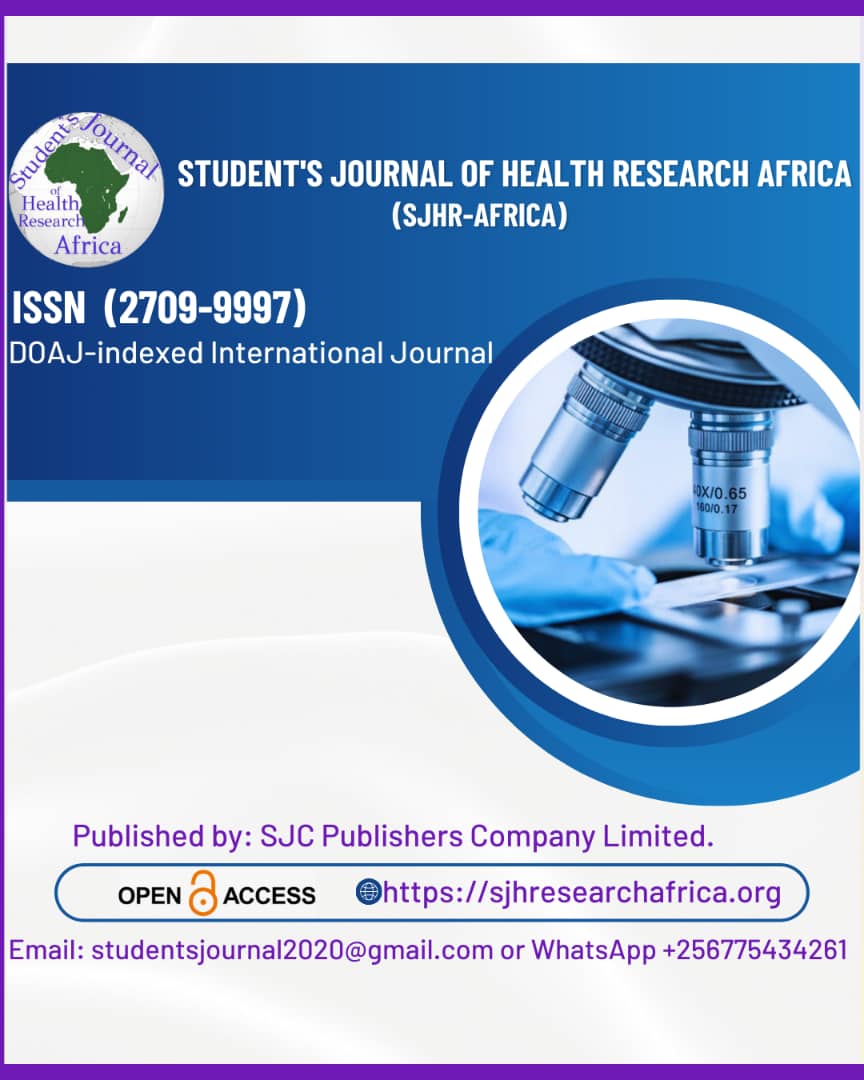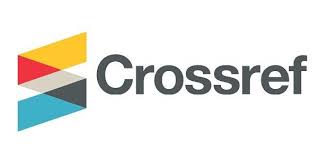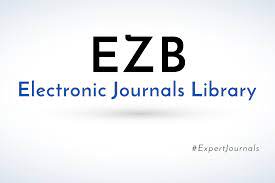Comparative efficacy of oral fexofenadine hydrochloride and intranasal fluticasone furoate in patients with moderate to severe allergic rhinitis: A prospective randomized comparative study.
DOI:
https://doi.org/10.51168/sjhrafrica.v6i9.2052Keywords:
Allergic rhinitis, Fexofenadine hydrochloride, Fluticasone furoate, Intranasal corticosteroids, AntihistaminesAbstract
BackgroundAllergic rhinitis (AR) is a prevalent chronic condition with a significant impact on quality of life. Pharmacotherapy with non-sedating antihistamines and intranasal corticosteroids remains the mainstay, though comparative evidence in Indian settings is limited. This study aimed to evaluate and compare the clinical efficacy of oral fexofenadine hydrochloride and intranasal fluticasone furoate in patients with moderate to severe AR.
Methods
A prospective comparative study was conducted on 100 patients aged 16–55 years presenting with moderate to severe AR at a tertiary care centre. Participants were randomized into two equal groups: oral fexofenadine 120 mg once daily (Group OF) and intranasal fluticasone furoate spray, one puff daily (Group NF). Baseline demographic characteristics, symptom scores, and visual analogue scale (VAS) ratings were recorded. Patients were followed up weekly for four weeks.
Results
Baseline demographic and clinical characteristics were comparable between groups (Table 1). Both groups demonstrated significant reduction in total symptom scores after 4 weeks (p < 0.001), with mean post-treatment scores of 1.16 ± 3.36 in Group OF and 1.90 ± 3.85 in Group NF (Table 2). Severity distribution showed that most patients shifted from severe to moderate categories without intergroup difference (Table 3). However, fluticasone produced greater improvement in nasal obstruction, sneezing, and nasal discharge compared with fexofenadine (Table 4). VAS scores confirmed the superior efficacy of intranasal fluticasone in reducing overall symptom burden (Table 5).
Conclusion
Both oral fexofenadine and intranasal fluticasone furoate are effective in alleviating symptoms of moderate to severe AR. Fluticasone demonstrated superior improvement in nasal symptoms and VAS reduction, suggesting it may be preferred as first-line therapy.
Recommendations
For patients with prominent nasal obstruction or persistent AR, intranasal corticosteroids should be prioritized. Antihistamines may be considered when systemic symptoms or patient preference for oral therapy exist.
References
Andrews CP, Martin BG, Jacobs RL, Mohar DE, Diaz JD, Amar NJ, Kaiser HB, Vandewalker ML, Bernstein J, Toler WT, Prillaman BA, Dalal AA, Lee LA, Philpot EE. Fluticasone furoate nasal spray is more effective than fexofenadine for nighttime symptoms of seasonal allergy. Allergy Asthma Proc. 2009 Mar-Apr;30(2):128-38. doi: 10.2500/aap 2009.30.3204. PMID: 19463203. https://doi.org/10.2500/aap.2009.30.3204
Aneeza WH, Husain S, Rahman RA, Van Dort D, Abdullah A, Gendeh BS. Efficacy of mometasone furoate and fluticasone furoate on persistent allergic rhinoconjunctivitis. Allergy Rhinol (Providence). 2013 Fall;4(3):e120-6. doi: 10.2500/ar.2013.4.0065. PMID: 24498516; PMCID: PMC3911800. https://doi.org/10.2500/ar.2013.4.0065
Hossenbaccus L, Linton S, Garvey S, Ellis AK. Towards definitive management of allergic rhinitis: best use of new and established therapies. Allergy Asthma Clin Immunol. 2020 May 27;16:39. doi: 10.1186/s13223-020-00436-y. PMID: 32508939; PMCID: PMC7251701. https://doi.org/10.1186/s13223-020-00436-y
Krishnakumar D, Faizal B, Nair AS. Comparison of the Effects of Azelastine and Fluticasone Nasal Sprays in the Treatment of Allergic Rhinitis. Indian J Otolaryngol Head Neck Surg. 2022 Oct;74(Suppl 2):1632-1637. doi: 10.1007/s12070-021-02686-7. Epub 2021 Aug 2. PMID: 36452604; PMCID: PMC9702036. https://doi.org/10.1007/s12070-021-02686-7
Abdullah B, Abdul Latiff AH, Manuel AM, Mohamed Jamli F, Dalip Singh HS, Ismail IH, Jahendran J, Saniasiaya J, Keen Woo KC, Khoo PC, Singh K, Mohammad N, Mohamad S, Husain S, Mösges R. Pharmacological Management of Allergic Rhinitis: A Consensus Statement from the Malaysian Society of Allergy and Immunology. J Asthma Allergy. 2022 Aug 2;15:983-1003. doi: 10.2147/JAA.S374346. PMID: 35942430; PMCID: PMC9356736. https://doi.org/10.2147/JAA.S374346
Day JH, Briscoe MP, Rafeiro E, Ratz JD, Ellis AK, Frankish CW, Chapman D, deGuia EC, Kramer B, Warner C. Comparative efficacy of cetirizine and fexofenadine for seasonal allergic rhinitis, 5-12 hours postdose, in the environmental exposure unit. Allergy Asthma Proc. 2005 Jul-Aug;26(4):275-82. PMID: 16270720.
Tantilipikorn P, Kirtsreesakul V, Bunnag C, Vangveeravong M, Thanaviratananich S, Chusakul S. The Use of Azelastine Hydrochloride/Fluticasone Propionate in the Management of Allergic Rhinitis in Asia: A Review. J Asthma Allergy. 2024 Jul 12;17:667-679. doi: 10.2147/JAA.S451733. PMID: 39045291; PMCID: PMC11264124. https://doi.org/10.2147/JAA.S451733
Dakhale G, Tathod Y, Patel S, Pimpalkhute S, Raghute L, Khamkar A. Comparison of efficacy, safety, and cost-effectiveness of rupatadine and olopatadine in patients of allergic rhinitis: A prospective, randomized, double-blind, parallel group study. J Pharmacol Pharmacother. 2016 Oct-Dec;7(4):171-176. doi: 10.4103/0976-500X.195901. PMID: 28163538; PMCID: PMC5242030. https://doi.org/10.4103/0976-500X.195901
Kumar RS, Jain MK, Kushwaha JS, Patil S, Patil V, Ghatak S, Sanmukhani J, Mittal R. Efficacy and Safety of Fluticasone Furoate and Oxymetazoline Nasal Spray: A Novel First Fixed Dose Combination for the Management of Allergic Rhinitis with Nasal Congestion. J Asthma Allergy. 2022 Jun 10;15:783-792. doi: 10.2147/JAA.S357288. PMID: 35712651; PMCID: PMC9196668. https://doi.org/10.2147/JAA.S357288
Scadding GK, Smith PK, Blaiss M, Roberts G, Hellings PW, Gevaert P, McDonald M, Sih T, Halken S, Zieglmayer PU, Schmid-Grendelmeier P, Valovirta E, Pawankar R, Wahn U. Allergic Rhinitis in Childhood and the New EUFOREA Algorithm. Front Allergy. 2021 Jul 14;2:706589. doi: 10.3389/falgy.2021.706589. PMID: 35387065; PMCID: PMC8974858. https://doi.org/10.3389/falgy.2021.706589
Meltzer EO, Caballero F, Fromer LM, Krouse JH, Scadding G. Treatment of congestion in upper respiratory diseases. Int J Gen Med. 2010 Apr 8;3:69-91. doi: 10.2147/ijgm.s8184. PMID: 20463825; PMCID: PMC2866555. https://doi.org/10.2147/IJGM.S8184
Bjermer L, Westman M, Holmström M, Wickman MC. The complex pathophysiology of allergic rhinitis: scientific rationale for the development of an alternative treatment option. Allergy Asthma Clin Immunol. 2019 Apr 16;15:24. Doi: 10.1186/s13223-018-0314-1. PMID: 31015846; PMCID: PMC6469109. https://doi.org/10.1186/s13223-018-0314-1
Sheikh A, Singh Panesar S, Salvilla S, Dhami S. Hay fever in adolescents and adults. BMJ Clin Evid. 2009 Nov 18;2009:0509. PMID: 21726475; PMCID: PMC2907832.
Devillier P, Dreyfus JF, Demoly P, Calderón MA. A meta-analysis of sublingual allergen immunotherapy and pharmacotherapy in pollen-induced seasonal allergic rhinoconjunctivitis. BMC Med. 2014 May 1;12:71. Doi: 10.1186/1741-7015-12-71. PMID: 24885894; PMCID: PMC4101870. https://doi.org/10.1186/1741-7015-12-71
Downloads
Published
How to Cite
Issue
Section
License
Copyright (c) 2025 Dr. Praneeth Kumar K, Dr. N Chetan Rahul, Dr. Narendrula Srilekha, Dr. Mohd Abdul Nihal

This work is licensed under a Creative Commons Attribution-NonCommercial-NoDerivatives 4.0 International License.





















